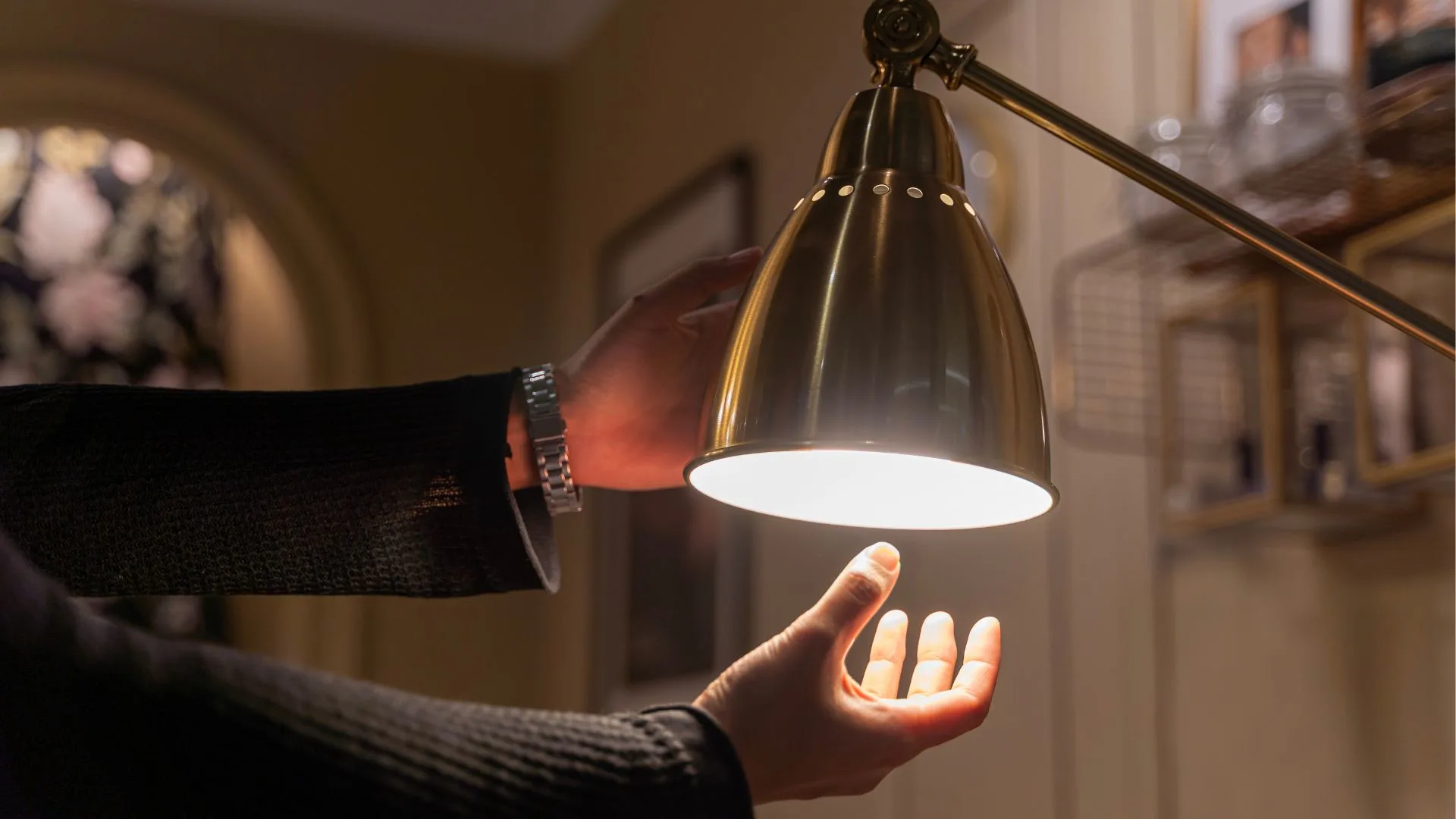When choosing an LED light for reading, the right color temperature makes all the difference. The wrong lighting can cause eye strain, headaches, or even disrupt your sleep patterns. The ideal light should mimic natural daylight, keep your eyes comfortable, and help you stay focused for longer reading sessions.
Quick Answer: Neutral white LED light between 4000K and 5000K is best for reading. It provides daylight-like clarity, reduces eye strain, and keeps you focused for longer sessions without causing visual fatigue.
Understanding Color Temperature in LED Lights
LED lights are available in different color temperatures, measured in Kelvin (K). This measurement indicates whether the light appears warm (yellowish), neutral, or cool (bluish).
Here’s a quick breakdown:
- Warm White (2700K – 3000K) – Soft, yellowish light similar to traditional incandescent bulbs.
- Neutral White (3500K – 4100K) – Balanced light with less yellow and less blue; closer to natural daylight.
- Cool White/Daylight (5000K – 6500K) – Bright, bluish light that enhances contrast and detail.
Which Color LED Light Is Best for Reading?
Neutral white LED light between 4000K and 5000K is best for reading. It closely mimics daylight, making text clear without causing eye strain. This range offers balanced brightness, improves focus, and reduces discomfort during long reading sessions.
If you also want to choose an LED that’s gentle on your eyes beyond reading, explore our detailed guide on which LED bulb is best for your eyes.
Comparing LED Color Temperatures for Reading
| Color Temperature | Appearance | Best For | Drawback for Reading |
|---|---|---|---|
| 2700K – 3000K | Warm yellow light | Cozy reading before bed | Can make text appear slightly dull |
| 3500K – 4100K | Neutral white light | General reading, study, work | Minimal drawbacks |
| 5000K – 6500K | Bright bluish white | Reading fine details, technical work | May cause strain if used for long hours |
Is Warm White or Cool White Better for Reading?
Neutral white (4000K–5000K) is better for reading than warm or cool extremes. Warm light can make text appear dull, while very cool light may cause eye fatigue. Neutral tones keep text sharp and comfortable to read, making them ideal for both casual and study reading.
Why Not Use Very Warm or Very Cool Lights?
- Too Warm (below 3000K) – Creates a relaxing ambiance but can make the text less crisp. Very warm lights may reduce contrast and clarity during extended reading.
- Too Cool (above 6000K) – May seem bright and sharp initially but often leads to eye strain and can disrupt natural sleep cycles if used late at night.
What Brightness Is Ideal for Reading LEDs?
For close reading, aim for 450–800 lumens. For general room reading, use 1500+ lumens to prevent eye strain. Always choose flicker-free lighting with a CRI above 80 for comfortable, true-to-life color visibility.
Best LED Light Setup for Reading at Night
A dimmable, flicker-free LED with a color temperature around 4000K–4500K at moderate brightness is best for nighttime reading. This setup keeps text clear, reduces glare, and helps protect your eyes from fatigue, even during long sessions.
Other Factors to Consider for Reading LED Lights
1. CRI (Color Rendering Index)
A high CRI (above 80) ensures colors appear true and natural, which is helpful when reading colorful illustrations or diagrams.
2. Flicker-Free Technology
Low-quality LEDs may flicker subtly, which can lead to headaches over time. Choose a flicker-free light for uninterrupted reading comfort.
3. Adjustability
A dimmable LED lamp with adjustable color temperature gives you flexibility for different reading conditions—daytime, evening, or night.
Best Practices for Setting Up Your Reading Light
- Position the Light Correctly – For right-handed readers, place the lamp on the left side to avoid shadows (and vice versa for left-handed readers).
- Avoid Glare – Use lampshades or diffusers to soften direct light.
- Combine Ambient and Task Lighting – A well-lit room plus a focused reading lamp reduces eye strain.
Quick Recommendation for Reading Comfort
If you want an LED that works well both day and night:
- Color Temperature: 4000K – 5000K
- Brightness: 450–800 lumens for close reading
- CRI: 80+
- Flicker-Free: Yes
- Adjustable Settings: Recommended
This combination offers a perfect balance between clarity and comfort, making it suitable for everything from bedtime novels to technical study material.
Why Choose Jivah?
At Jivah, we design LED lighting that blends comfort, clarity, and energy efficiency. Our reading-friendly LEDs are crafted to protect your eyes, reduce strain, and provide consistent brightness. With advanced manufacturing standards, we ensure every LED meets high CRI ratings, flicker-free performance, and optimal color temperatures for your needs.
If you’re looking for a trusted LED light manufacturer that prioritizes quality and user comfort, explore Jivah’s range of products today — because your eyes deserve the best light.

